Bai Re
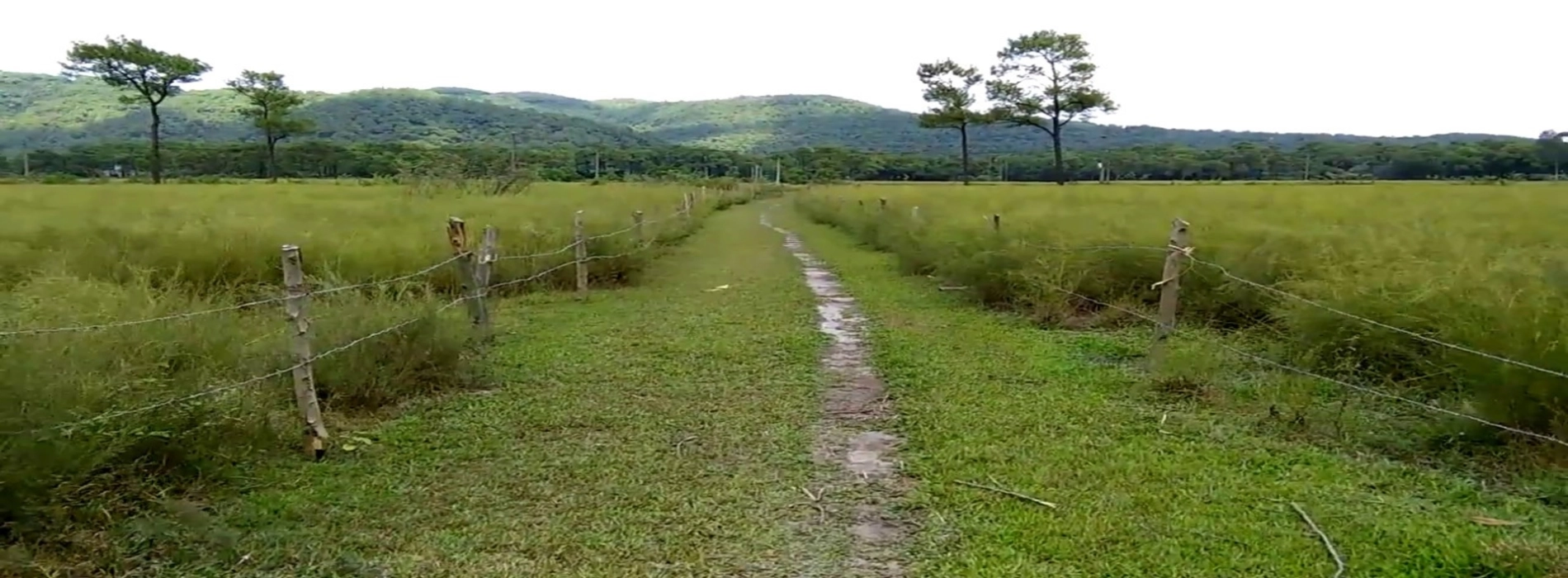
Bai Re is based in Cong Hoa Ward in Chi Linh City, Hai Duong Province, right near the pine forest beneath Con Son Mountain. It’s just over 1 kilometer from the famous Con Son Pagoda, and about 30 kilometers from the center of Hai Duong City, following National Highway No. 37.
Bai Re means “a field of re plant”. As the name suggests, Bai Re is a field of Baeckea frutescens (a member of the myrtle family), called “re”, or ”thanh hao” in Vietnamese.
The plant is a shrub with small arching branches, long slender leaves, and white flowers. After harvesting, the branches are dried and then made into a sweeping broom, often known as “choi se”. This broom has been a familiar household item to many generations of Vietnamese.
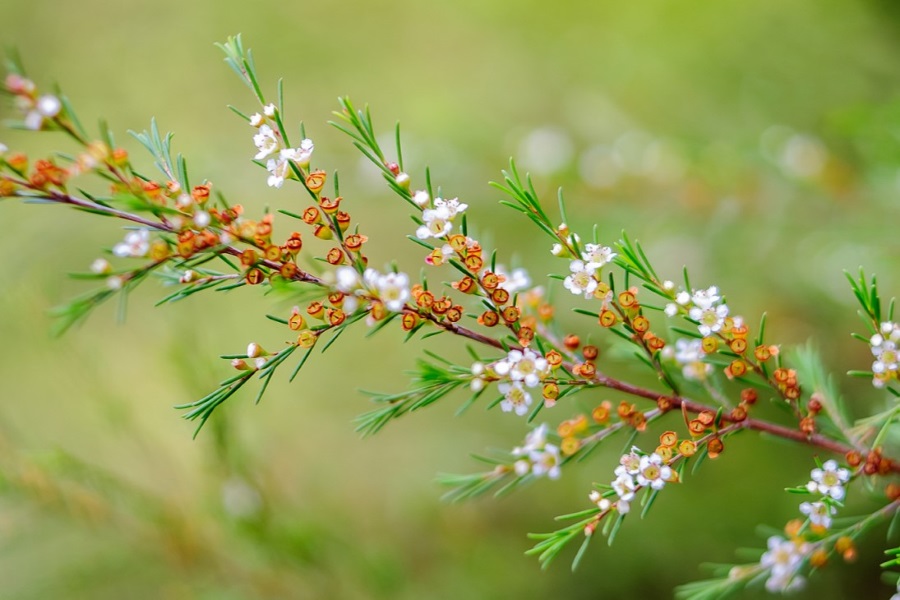
The re plant (Source: VnExpress)
It’s said that the cultivation of the plant originated from the Tran Nguyen Dan spouses (the politician Nguyen Trai’s grandparents). While Tran Nguyen Dan planted pine trees on the Con Son Mountain, his wife planted the re plant down at the mountain’s bottom as well.
Their efforts slowly transformed Con Son from a rather desolate countryside into a green forest with beautiful scenery. The people around them started to do the same thing also, and after hundreds of years, made Bai Re as we see now.
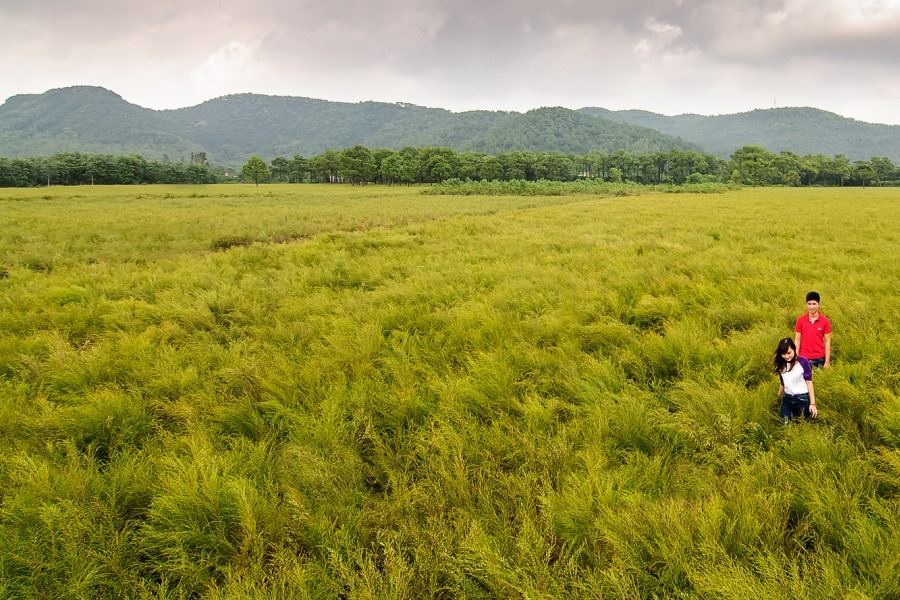
A corner of Bai Re (Source: VnExpress)
During the harvest season, Bai Re becomes a vibrant sight, adorned with tiny white flowers that release a gentle fragrance. This scene, along with the refreshing breeze, creates a romantic atmosphere, perfect for couples or young people seeking a picturesque backdrop for photos.
The charm doesn’t stop at just that. Even after harvesting, the plant leaves behind a vast yellowish-green carpet that complements the towering pines, attracting visitors, especially families seeking tranquility and a chance to connect with nature.
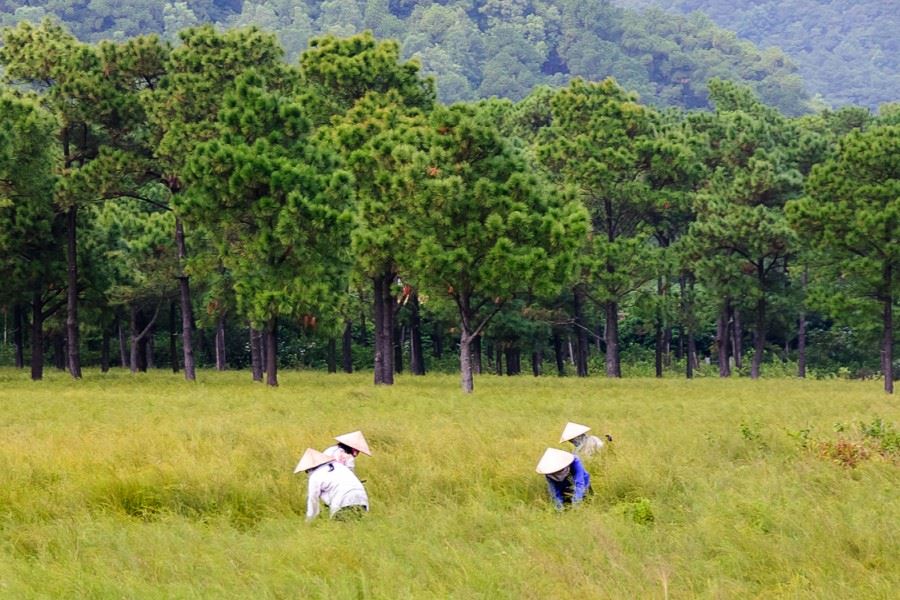
Locals harvesting the re plant in Bai Re (Source: VnExpress)
Hidden among the wooded mountains of Chí Linh City lies the tranquil complex of temples and pagodas. It’s called the Con Son – Kiep Bac Complex, with Con Son Pagoda and Kiep Bac Temple as the main structures.
Con Son Pagoda is located on the bottom of Con Son Mountain. Built in the 14th century, the pagoda is regarded as one of Vietnam's three key centers for Truc Lam Zen Buddhism.
Just 5 kilometers from Côn Sơn Pagoda – as the crow flies – lies Kiep Bac Temple near the confluence of 6 rivers (Luc Dau Giang). The temple was built in 1300 to offer a tribute to Tran Hung Dao, a revered Vietnamese military leader. He played a crucial role in repelling three Yuan-Mongol invasions during the 13th century.
Kiep Bac's history intertwines with Tran Hung Dao's legacy. Following his initial victory, he chose this area as a strategic military base. In 1285, Kiep Bac witnessed the gathering of over 20,000 soldiers and 1,000 warships that secured a second triumph.

A panorama of Con Son Pagoda in the Con Son – Kiep Bac Complex, just a few kilometers from Bai Re (Source: Lao Dong Newspaper)
Chi Linh City has long been known for its hill chicken. Unlike caged chickens, these birds have the freedom to explore the hillsides each day, hence the firm meat with a richness that sets them apart from others.
Hill chicken can be cooked in many different ways like boiling or steaming with salt. However, the most famous dish would be the grilled one.
The chicken will be left whole and seasoned with herbs and spices before being grilled with charcoal. Its buttery fat, together with the fragrant herbs and the refreshing muoi ot (chili salt) will surely satisfy you.
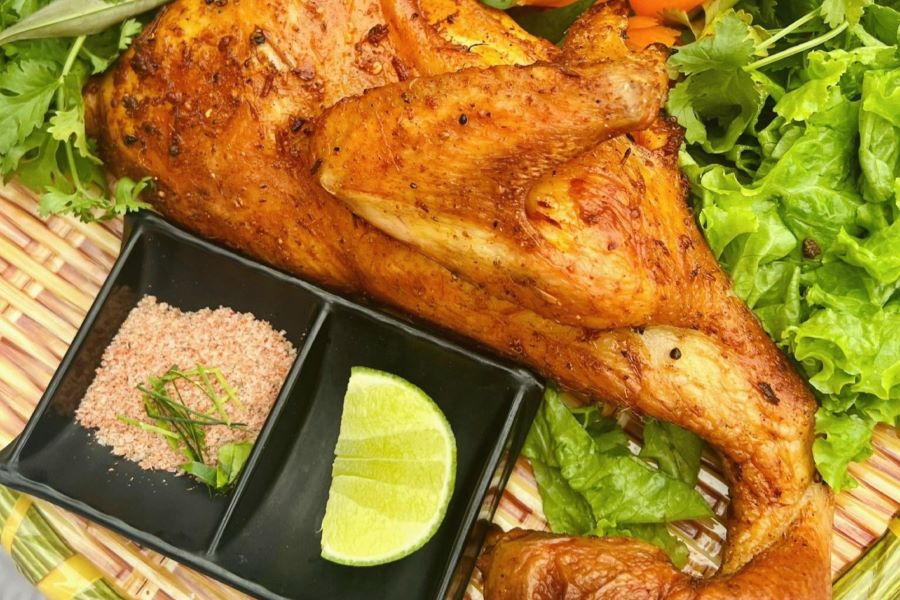
A food to try at restaurants around Bai Re, grilled chicken with chili salt (Source: Ga Tuoi Manh Hoach)
The harvest season for re plant is around the 7th-10th lunar month, which equals the period between August and November. It’s best to come to Bai Re at this time of the year.
During August and September, it rains more often and there are also many sudden rains. However, the weather is still quite hot and humid in general. Therefore, don’t forget to bring your hats/umbrellas and water to avoid dehydration, heat stroke, and fatigue.
October up until early November is somewhat autumn in Vietnam, when it gets cooler and even a bit cold at night. The first cold wave would come in around late November to early December, bringing an abrupt change in the weather pattern. You should always check the weather forecast before going on a trip to make sure you’re well-prepared.
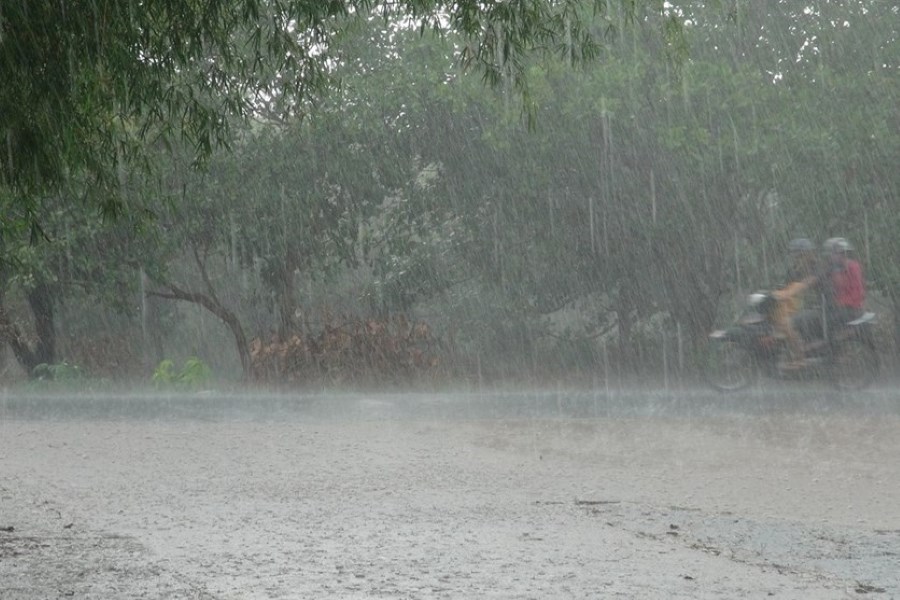
Sudden rain is a typical weather phenomenon in northern Vietnam during August and September (Source: Quan Doi Nhan Dan Newspaper)
Bai Re doesn’t have a fixed entrance fee as it is divided into areas under the operation of different local families. The fee would range from VND 20,000 – VND 50,000 depending on the number of visitors. The more visitors, the less the fee would be.
Bai Re is most suitable for a day trip, so unless you want to stay the night there, a hotel is not necessary. Even so, the closest hotels would be around the Con Son – Kiep Bac Complex, with the price ranging from about VND 200,000 onwards – for your information.
From Hai Duong City, you can take a taxi or rental car to Bai Re, or even drive a car/motorbike thanks to the close distance. The drive would take you roughly 1 hour, or less if there’s not much traffic.
However, it would take you twice the distance and the time to travel to Bai Re from Hanoi. Hence, it's better to start the trip a bit early in the morning.
How do you feel about Bai Re after reading our brief introduction? Do you feel like packing your bags to come visit Bai Re and take a rest among the re plant under the pine canopy yet?
If you need more information about traveling in Vietnam in general, don’t hesitate to check our Vietnam Travel Blog. You can even find interesting facts about our lifestyle and culture there! Contact Asia King Travel for relaxation on the grassland!